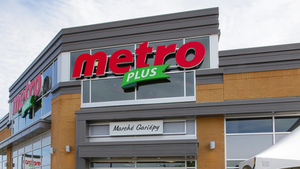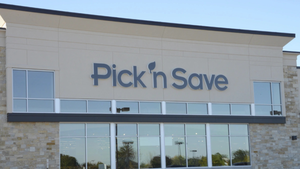The sustainable seafood angle
January 1, 2018
Seafood is heating up the competition with sustainably sourced products and value-added offerings.
“Approximately two-thirds of the earth’s surface is covered in water” is a fact that every kid learns in elementary school science class. What lies beneath the water’s surface is a source of fascination for both kids and adults alike. Human intrigue is often aroused by images of massive blue whales, the acrobatic dolphins at Sea World or the Discovery Channel’s Shark Week.
Yet, among these impressive swimming creatures is something more powerful than a great white shark’s jaws—a source of food that, if cared for properly, can last indefinitely.
Seafood is beginning to gain headway in the supermarket against its on-land protein competitors, meat and poultry. In addition to offering a number of unique health benefits—USDA and American Heart Association both recommend eating seafood at least twice a week—seafood companies are achieving something other industries sometimes struggle with: sustainability.
“Land use dedicated to producing meat is already overpopulated, and we can’t produce the meat or corn necessary to feed enough animals to produce the protein we need,” says Rajiv Kaul, CMO for Pacific Seafood, based in Clackamas, Ore. “However, the waters to produce seafood are very underutilized today. There are a lot of factors that make sense for long-term seafood consumption to grow.”
Long-term growth is what the industry needs. Currently, seafood consumption is flat in the U.S., say industry observers, though it sees significant growth in other parts of the world. Kaul says that the U.S. consumption is about half of the average consumption for the rest of the world, and even less than that when up against particular countries.
Seafood producers and marketers are armed to change this trend with innovative products, cooking instructions, education and sustainability certifications—the latter especially catching the attention of retailers.
For example, Clearwater Seafood, based in Bedford, N.S., Canada, recently partnered with a major retailer that made it its mission to source 100% responsibly harvested seafood. Through this partnership, the retailer tapped into Clearwater’s expertise and conducted a large campaign to educate its consumers on smart shopping habits.
“The importance of consumer education must be emphasized,” says Jeff Duffin, vice president of marketing for Clearwater Seafood. “Consumers should be able to determine where their seafood comes from, whether it is wild-caught or farmed and if it is sustainably sourced.
The term “sustainable” carries a lot of value with today’s shoppers, especially younger demographics, such as Millennials. In many consumers’ view, sustainability is synonymous with terms such as “healthy eating,” “organic” and “natural,” says Duffin, adding that they are willing to pay a premium for it.
Yet, others are skeptical about the impact sustainability certifications have on retail sales.
According to Tom Sunderland, vice president of marketing for Ocean Beauty Seafood, based in Seattle, the proliferation of sustainability labels is one of the greatest sources of confusion in the marketplace, and it is having a detrimental impact on our ability to grow seafood sales. “Anytime you introduce confusion, such as eco-labels or mercury misinformation, potential growth is blunted,” he says.
It falls on the retailer to look out for their consumers and make sure the seafood for sale in their store was raised in a responsible manner. And for the most part, retailers are doing a very good job of it.
Larry Andrews, retail marketing director out of the Seattle office for the Juneau, Alaska-based Alaska Seafood Marketing Institute, applauds retailers in their efforts to provide products that meet their customers’ needs, as it often means sorting through, what can be, conflicting messages.
“In my experience, retailers are asking the right questions and investing a great deal of time to become better informed on the various certification plans rather than entrusting those decisions to a third-party,” says Andrews.
With so many labels and certification programs in the marketplace, retailers have to work to simplify the information they share. Even then, it is not a sure sell; sustainability is not a priority for every shopper.
Plenty of fish…
In order to grow seafood consumptions—and therefore, sales—retailers need to address a number of current obstacles; the most prominent being a fear of preparing or cooking seafood.
Many companies, such as Clear Springs Foods, offer recipe materials to be distributed at the fresh seafood retail case. “It is all about ease of preparation, excellent quality and flavor,” says Don Riffle, vice president of sales and marketing for the Buhl, Idaho-based company. “If we can make cooking seafood more friendly to the average consumer, then they will choose seafood as a healthy alternative to other proteins.”
Another way companies are making seafood prep easier is by expanding the value-added/convenience and frozen seafood segments. By offering a quick meal solution while addressing consumers’ lack of familiarity and knowledge, these segments are attracting a new set of shoppers to the category, say observers.
“Speed scratch” items—pre-marinated, cooked or seasoned products—give consumers a “head start in the kitchen while still allowing them to customize their meals and make them their own,” says Duffin.
Quality is not something seafood producers are willing to compromise in the convenience segment either. Morey’s Seafood International offers a “Love it or its free,” guarantee on each product box.
“Our products are exceedingly high-quality; we simply utilize the finest ingredients and will not compromise our standards,” says Scott Wickert, vice president of sales for the Motley, Minn.-based company. “At the same time, we have removed the factors that typically cause this intimidation by hand selecting the fish, applying deliciously blended seasonings and providing simple and easy cooking instructions for our products. In essence, we have taken the guesswork out of preparing excellent seafood entrees at home.”
What’s in a name?
Pacific Seafood has put its passion for sustainable sourcing into words—and those words are its brand. The new branding, Pacific Sustainable Seafood, was introduced last September to demonstrate to retailers and consumers that the Clackamas, Ore.-based company is dedicated to responsible sourcing.
“The fact that the word sustainable is in the brand name shows that we are all-in on this game and not just making a claim,” says Rajiv Kaul, CMO.
The goal for the brand is to grow seafood consumption by offering a brand that consumers can fully trust. Kaul says that by utilizing a brand across the category, the retailer can build a sense of trust and loyalty in their seafood department.
“Consumers look to a brand for security,” he adds. “The reason people buy Tide is because they have been using it for 50 years and they know how it works. In the seafood business there are not enough brands that consumers have confidence in.”
Currently the line features a range of raw and smoked products, as well as some value-added items, with more value-added and convenience offerings coming in 2015.
About the Author
You May Also Like




